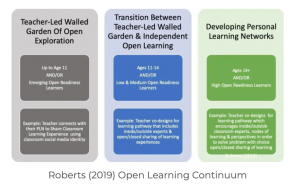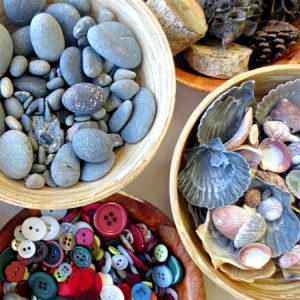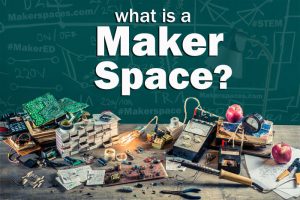Course Readings:
Sterling, L., “Session L : Coding in the curriculum : Fad or foundational?” (2016). 2009 – 2019 ACER Research Conferences. 4.
https://research.acer.edu.au/research_conference/RC2016/9august/4 Retrieved from: https://research.acer.edu.au/cgi/viewcontent.cgi?article=1297&context=research_conference
- issue – what concepts are being addressed in teaching coding and how essential are they for engendering an understanding of the digital world around us, and improving productivity and innovation?
- we (teachers) tend to take advantage of the fact that computers are now essential in schools, and students need basic computer literacy skills
- how to teach computational thinking? and where should it be placed in the curriculum?
- general lack of agreement in whether computational thinking should ultimately be incorporated into education as a general subject, a discipline-specific topic, or a multi-disciplinary topic
- to teach computer programming in school or not?
- ‘coding in the curriculum’ seems to be the current preferred option to programming
- benefits to teaching code from an early age?
- thinking engendered by coding (general problem-solving and design skills)
- appreciation of what computers can and cannot do
- providing exposure (encourage more students to take up careers in coding)
- objections to placing coding in the curriculum
- does not come from an adequate pedagogical basis
- no evidence base establishing that coding is beneficial (not correct, but evidence is primarily anecdotal)
- push for coding is primarily about vested interests
- current popular ‘Scratch like’ environments are too limited to learn the important programming concepts
- space can be made in the curriculum to connect coding to math and science lessons
- Important to provide opportunities to children
My Experience:
Our district has been on board and supportive since the beginning. We even have a district coding arcade put together each year where kids create coding games and showcase them to other students and families in the district.
As a Grade 2/3 teacher over the past few years, I have seen the growing fad of incorporating coding into the curriculum. I agree with the author of the article for this week in the sense that it is important to provide these types of coding opportunities to children as exposure to what is possible in the world of technology. My young students are still learning what coding means, but by engaging in activities such as the Hour of Code each year and practicing their game creation by progressing through step by step instructions on Code.org, they are developing computational thinking and gaining a deeper understanding of how technology works.
My Perspective:
Is coding a fad or is it something that needs to be integrated into every curriculum? Why or Why not?
I think it is something that can easily be integrated into the BC curriculum in a variety of ways at each grade level. In the primary years it can be taught without the use of technology by coding and giving directions in play. In the middle years it can be integrated into literacy by having students tell a story using Scratch, and in the older years it can be coding robots to complete a task in shop class! I think coding teaches computational thinking and exposes students to a different way of engaging with technology that they didn’t know was possible before.
Just as the author of the article mentioned, we engage students in other creative endeavours (music, art, etc.) and this is another form of creative expression that students might really gravitate towards.
What is the role of computer science in digital literacies?
The study of computer science (coding) allows students to explore a relationship and language with technology that they did not know existed before and manipulate that relationship to get their desired outcome.
We are becoming more and more digital (especially during the Covid-19 pandemic) and students are engage with digital platforms more than ever before. But they don’t necessarily understand how they do what they do. I think it’s important to provide students insight into that.
How are emerging educational technology trends impacting your learning context?
As a young millennial teacher who is interested in all new technology – I am always game to explore the new trend (with district approval if need be). Personally, I find this process very exciting, and the more experience I get as a teacher, the better I get an integrating them into what I am already teaching in the classroom.
What I am learning now, through my ongoing masters project research, is how to build an environment and a space where I can help the whole staff be risk takers when it comes to technology. I am very happy to say that during this uncertainty in remote teaching and learning, most of our teachers have tested and tried things that they never thought they would! And I am so proud!



Recent Comments